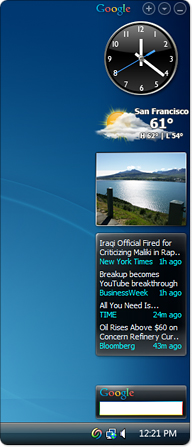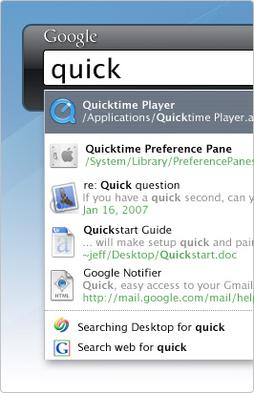There was a time when finding a file on your computer felt like searching for a needle in a haystack, Google Desktop was supposed to change all that. For a while, it promised to be the ultimate tool for instantly finding anything on your PC, from emails to documents to web history. But like many ambitious projects, it eventually faded away, becoming just another forgotten chapter in tech history. Let’s rewind and explore the rise and fall of Google Desktop, a tool that once brought Google’s powerful search capabilities right to your desktop.
The Birth of a Revolutionary Tool
Back in 2004, Google was rapidly expanding its influence beyond just web search. Enter Google Desktop, a tool that promised to bring the power of Google’s search engine to your personal computer. The idea was simple yet brilliant: let users search their entire computer—emails, files, chat history, you name it—with the same ease and speed as searching the web.

Windows
At a time when computers were becoming cluttered with growing amounts of data, Google Desktop was a game-changer. Instead of manually digging through folders or relying on sluggish built-in search functions, you could just type a few keywords into Google Desktop, and voila! The files or emails you needed would appear in seconds.
The Golden Era
For a few years, Google Desktop was a must-have tool for anyone who wanted to stay organized and efficient. It wasn’t just about searching your computer; Google Desktop offered a range of features that made it feel like a true personal assistant. The Sidebar was one of its standout features, a customizable strip that could sit on the side of your screen, providing real-time updates and access to various tools.
The Sidebar included gadgets like:
- Email Checker: Keep an eye on your inbox without needing to open your email client.
- Weather Updates: Always know what the weather is like outside without leaving your desktop.
- News Feeds: Stay updated with the latest headlines as they happened.
- To-Do List: Keep track of your tasks and reminders.
- Photo Slideshow: Enjoy a rotating display of your favorite images right on your desktop.
Google Desktop also had something called the “Quick Search Box,” which popped up with a double-tap of the Ctrl key. It was a neat way to find anything on your PC without interrupting your workflow. And let’s not forget the ability to index your files in the background, so when you needed something, it was ready to be found in an instant.

The Gathering Storm
However, as with all things in tech, the landscape started to shift. The rise of cloud computing and web-based services meant that more and more of our data was being stored online rather than on our local hard drives. Services like Gmail, Google Docs, and other cloud platforms began to take over, reducing the need for a tool that searched local files.
Moreover, operating systems were catching up. Windows and MacOS were improving their built-in search functions, making them faster and more reliable. The features that once made Google Desktop indispensable were becoming standard in newer versions of operating systems.

MAC
But it wasn’t just technological advancement that signaled the beginning of the end for Google Desktop. As more people used the tool, concerns began to arise about privacy and security. Google Desktop had the potential to index everything on your computer, including sensitive and private information. This raised eyebrows, particularly around the possibility of this data being exposed or misused.
Critics pointed out that if Google Desktop were compromised, it could give attackers access to a treasure trove of personal information. Even though Google provided reassurances about the security of the tool, the growing concern about privacy in the digital age made people more cautious. The idea of having all your data easily searchable by a third-party tool began to feel risky rather than convenient.
The Decline
By the late 2000s, Google Desktop was starting to feel like a relic. While it had been revolutionary at its peak, it was now struggling to keep up with the changing ways people used their computers. The rise of smartphones and tablets, which relied on cloud storage and had their own search functionalities, further eroded its relevance.
In 2011, Google announced that it would discontinue Google Desktop. The tool that had once been a lifesaver for managing digital clutter was now deemed unnecessary in the age of cloud computing and advanced OS search features. Users were left to find new ways to keep their files organized—or simply embrace the cloud and let go of the need to search local files altogether.
The Final Days
The final days of Google Desktop were met with a mix of nostalgia and acceptance. Loyal users mourned the loss of a tool that had once been an integral part of their digital lives. But as with many tech innovations, the end was inevitable. The world had moved on, and so had Google.
The Fall into Obscurity
Today, Google Desktop is a forgotten artifact, a reminder of a time when our data was scattered across hard drives and we needed powerful tools to make sense of it all. It serves as a chapter in the story of how we manage information in the digital age, showing how quickly technology evolves and how easily yesterday’s game-changer can become today’s footnote.
In a world where cloud storage and online search dominate, it’s easy to forget the days when a tool like Google Desktop was essential. It was a pioneer in desktop search, paving the way for more integrated and seamless ways of managing information.
Echoes in the Abyss
Peering into the abyss of forgotten software, we find the ghost of Google Desktop. It’s a testament to the rapid pace of technological change and the ways we’ve adapted to storing and finding information. Its rise and fall reflect the relentless march of progress and the shifting landscape of how we interact with our digital environments.
While Google Desktop may be gone, its influence lingers in the search functionalities we now take for granted. It’s a reminder that even the most innovative tools must evolve or fade away.
Thank you for taking this journey with me. Please join me next time, as we continue exploring the stories that shaped our digital world. Until then, stay relevant, or you may one day become just another echo in the abyss.